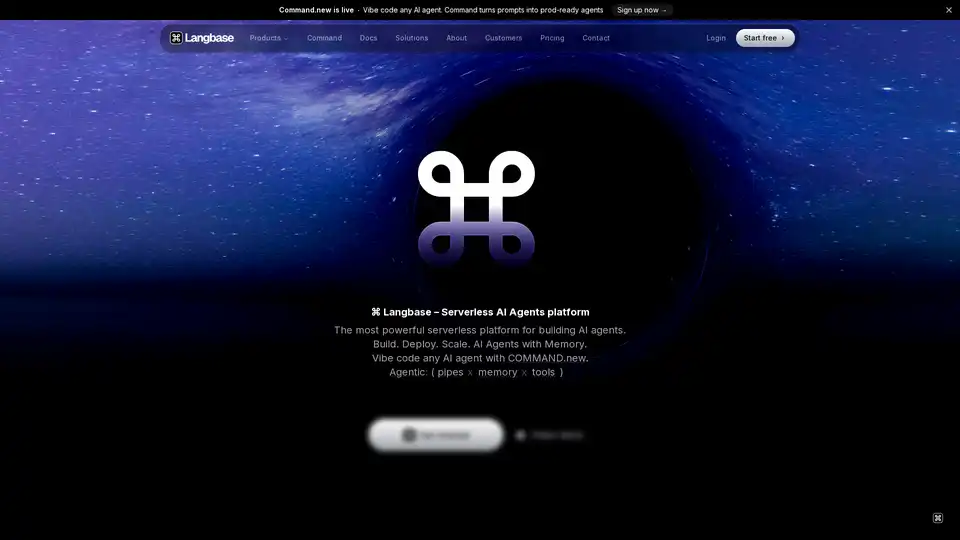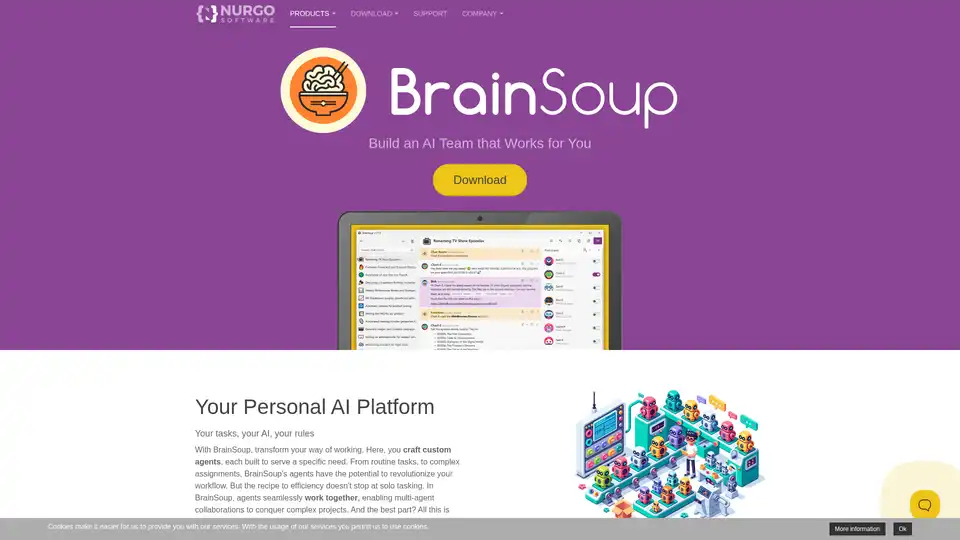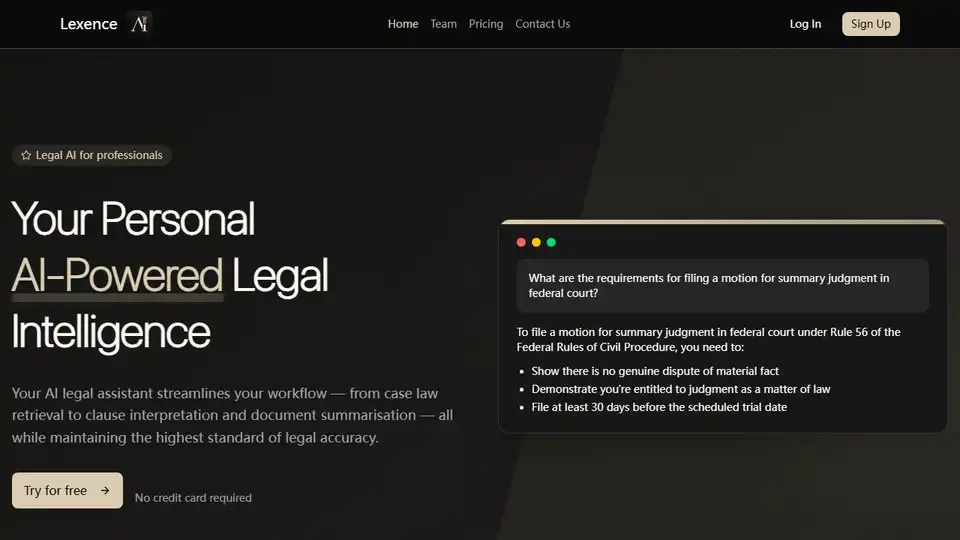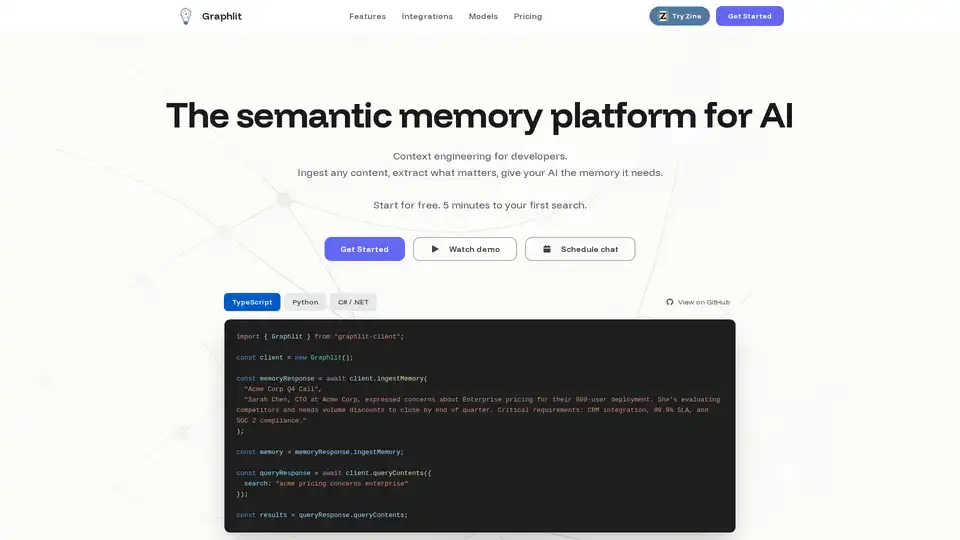
Graphlit
Overview of Graphlit
Graphlit: The Semantic Memory Platform for AI
Graphlit is a semantic memory platform designed to provide AI with the contextual understanding it needs to perform effectively. It's built for developers who want to ingest any content, extract key information, and give their AI the necessary memory. This platform helps in building semantic memory efficiently by offering a ready-to-use API, saving weeks of engineering time and infrastructure setup.
What is Graphlit?
Graphlit is a comprehensive platform that enables context engineering for AI applications. It facilitates the ingestion of various types of content, extracts relevant information, and provides AI with the memory it needs. It goes beyond basic vector solutions by providing a production-ready platform with complete ingestion-to-retrieval stack, true multimodal support, and years of production hardening.
How does Graphlit work?
Graphlit works by providing a single API for content ingestion, semantic search, and AI-powered retrieval. Here’s a breakdown of its functionalities:
- Content Ingestion: Allows you to ingest documents, audio, video, and web pages. It extracts entities and relationships, providing your AI with semantic memory rather than just similarity search.
- Format Flexibility: Supports text, PDFs, images, audio, video, Slack messages, emails, and Jira tickets. It integrates with models like GPT-5, Sonnet 4.5, and Gemini 2.5, and includes built-in visual object detection, transcription, and OCR.
- Full Stack Solution: Offers automated data feeds, ingestion, extraction, enrichment, storage, and retrieval. It includes Python, Node.js, and .NET SDKs, and is serverless.
- Scalability: Designed to be multitenant-ready with role-based access control (RBAC) and encrypted-at-rest. It features usage-based pricing, eliminating the need to deploy infrastructure.
Key Features of Graphlit:
- Context Engineering: Enables AI to understand context, not just perform similarity searches.
- Multimodal Support: Handles various content formats, including text, PDFs, images, audio, and video.
- Integration: Connects with tools like Google Drive, Dropbox, Slack, Notion, and GitHub.
- Model Flexibility: Accesses the latest AI models from providers like OpenAI, Anthropic, and Google, allowing you to switch between models to find the best fit.
- Automated Data Feeds: Simplifies ingestion, extraction, enrichment, storage, and retrieval processes.
- Scalability: Built for handling large-scale, multitenant applications with features like RBAC and encryption.
Why choose Graphlit?
- Save Time: Reduces engineering time by providing a ready-to-use API.
- Comprehensive Solution: Offers a complete ingestion-to-retrieval stack.
- Multimodal Support: Supports various content formats from day one.
- Production-Ready: Built with years of production hardening.
Who is Graphlit for?
Graphlit is designed for:
- Developers: Building AI applications that require semantic memory.
- Businesses: Scaling AI initiatives across the organization.
- Organizations: Needing to connect various data sources for AI processing.
How to use Graphlit?
- Start with Developers: Integrate Graphlit with tools like Cursor, VS Code, and Claude Desktop.
- Connect Data: Bring data from sources like Google Drive, Dropbox, Slack, and Notion.
- Use SDKs: Utilize Python, Node.js, and .NET SDKs for seamless integration.
- Choose AI Models: Select from the best AI models from OpenAI, Anthropic, Google, and others.
Graphlit Pricing
Graphlit offers usage-based pricing with a free tier to get started. Here are the pricing tiers:
- Free: Includes 100 credits, 1GB storage, and community Discord support.
- Hobby: $49/month + usage, includes 10GB content storage and email support.
- Starter: $199/month + usage, includes 100GB content storage and priority email support.
- Growth: $999/month + usage, includes unlimited content storage, dedicated technical contact, and SLA (coming soon).
Graphlit Use Cases:
- Enhanced AI Chatbots: Providing chatbots with contextual understanding to improve responses.
- Improved Content Retrieval: Facilitating semantic search for better information discovery.
- Automated Data Processing: Streamlining data ingestion and extraction processes.
In summary, Graphlit simplifies the complexities of building semantic memory for AI by offering a comprehensive platform that integrates seamlessly with various tools and AI models. It's designed for developers and businesses looking to enhance their AI applications with contextual understanding and efficient data processing.
AI Task and Project Management AI Document Summarization and Reading AI Smart Search AI Data Analysis Automated Workflow
Best Alternative Tools to "Graphlit"

Langbase is a serverless AI developer platform that allows you to build, deploy, and scale AI agents with memory and tools. It offers a unified API for 250+ LLMs and features like RAG, cost prediction and open-source AI agents.

Transform your workflow with BrainSoup! Create custom AI agents to handle tasks and automate processes through natural language. Enhance AI with your data while prioritizing privacy and security.

iChatBook transforms reading with AI-powered conversations, interactive stories, and gamified learning challenges. Ask questions, get instant answers from any book, and create personalized reading experiences.

Lexence is an AI-powered legal assistant streamlining legal research, document analysis, and contract review. Trusted by legal professionals for enhanced accuracy and efficiency.
